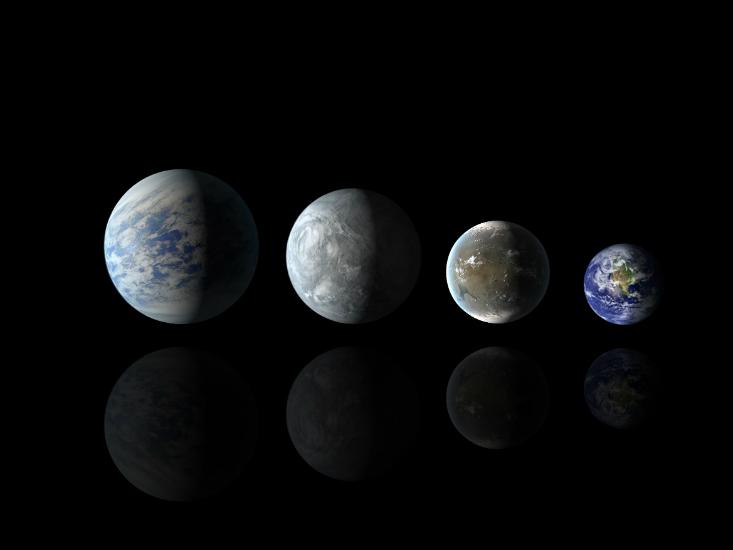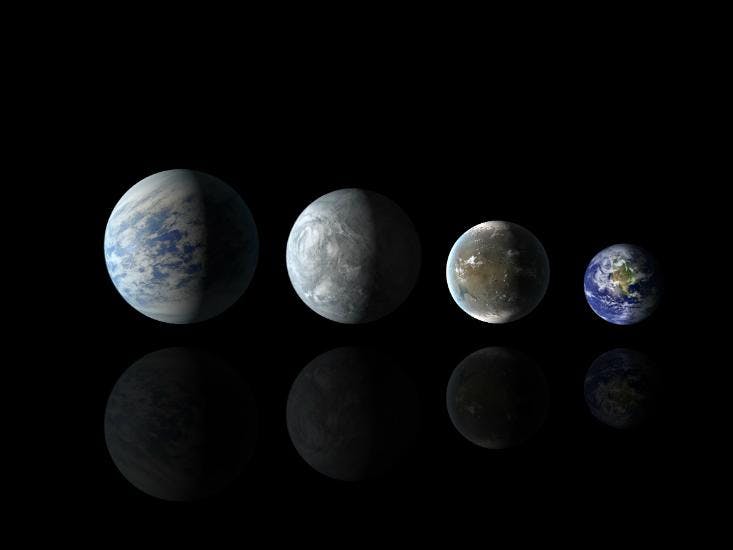
Astrobiology, the study of life on other worlds, is one of the coolest sciences ever. From extremophile bacteria living miles underground and feeding off radioactivity to exoplanetary systems with bizarre head-spinning architectures, astrobiology includes some of the most amazing parts of the natural world. But for some hardened naysayers, Astrobiology’s glamour is tainted by that small problem that it doesn’t really have a subject yet. When it comes to the issue of life “out there,” we are stuck with trying to generalize from life right here. Astrobiology has an “N=1” problem: There is only one known planet that’s formed life—simple, intelligent, or otherwise.
Faced with this inescapable reality, it is, therefore, remarkable how much astrobiologists have squeezed out of the facts available. One particularly fecund example of creative thinking (or overly creative thinking depending on your perspective) has been the attempt to quantify probabilities associated with the evolution of intelligence.
Back in 1983 Brandon Carter assessed the probability for developing intelligence on any life-bearing planet based solely on the timing of intelligence’s emergence on Earth. Later other researchers like Andrew Watson took Carter’s arguments further by adding new insights from subsequent study of the history of life.
The basis for these kinds of arguments rests on an elemental kind of intuition. Every planet has only a set period during which it might be habitable. The main reason for this is stars are always slowly increasing their temperature. For Earth this increasing solar temperature affects the ability to maintain a stable climate via greenhouse gases. Current estimates tell us that Earth has about 1 billion years left before it becomes too hot to support life. And since life here began around 4 billion years ago, that means the planet is close to the end of its habitable period.
So what does imply for the probabilities of life and intelligence? Let’s start with the simplest forms of life. Earth is about 4.5 billion years old, and early forms of life were definitely on the planet by 3.7 billion years ago. That bare fact seems to imply that it wasn’t hard to get life going on Earth; if initiating life was really improbable, then we should have had to wait a long time before its appearance. For human-type intelligence, the implication is reversed. The fact that it took the entire rest of the Earth’s history for intelligence to show up implies it must be really hard (i.e., improbable) to develop.
What Carter, Watson, and others did was try and add more meat to these intuitive bones by formulating a probabilistic theory based on the idea that life has to pass through some number of “difficult steps” on its way to intelligence. In a 2008 paper (pdf), Watson rummaged through the attic of life’s long history on Earth and comes up with 7 discrete, difficult obstacles on the way to intelligence. These include the development of chromosomes from “unlinked” early replicating molecules; the advent of the DNA-protien genetic code; the evolution from prokaryotes without cellular nucleus to eukaryotes with nuclei; the advent of sexual reproduction; cell differentiation in multicellular organisms; and finally the development of language.
Each step has its own level of evolutionary “difficulty,” and unless all the steps are crossed, intelligence can’t emerge. What Watson offers is a set of probability distributions for these steps that, in the end, yield a judgment on the ease with which a life-bearing world will pop out an ET wanting to phone home.
After all is said and done, Watson’s argument pushes us to the conclusion that was already there in the intuitive version of the story: Simple life may be common; intelligent life is likely to be rare. So much for Star Trek visions of a galaxy teeming with civilizations (all humanoids with a different kind of forehead).
Of course there are many ways in which this kind of argument can go wrong, based as strongly as it is on Earth’s history. Perhaps the first ET we find will have evolved quickly on its home world. But given our paucity of information, there is a compelling power to using the limited info we do have to best effect. While the proof of the pudding on this question can only be in the eating, the exercise of thinking along the lines of Carter and Watson inspires us to think deeply and creatively at how life emerged on Earth—and how it could happen on other planets.
Adam Frank, a professor of physics and astronomy at the University of Rochester, is the author of About Time: Cosmology and Culture at the Twilight of the Big Bang and a co-founder of NPR’s “13.7 Cosmos and Culture” blog.



